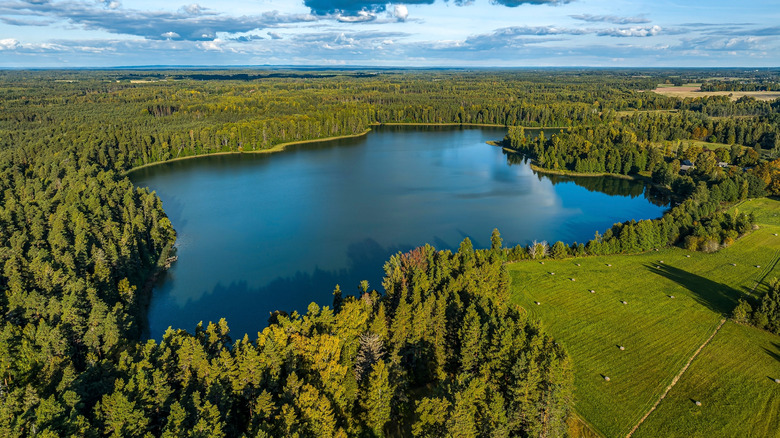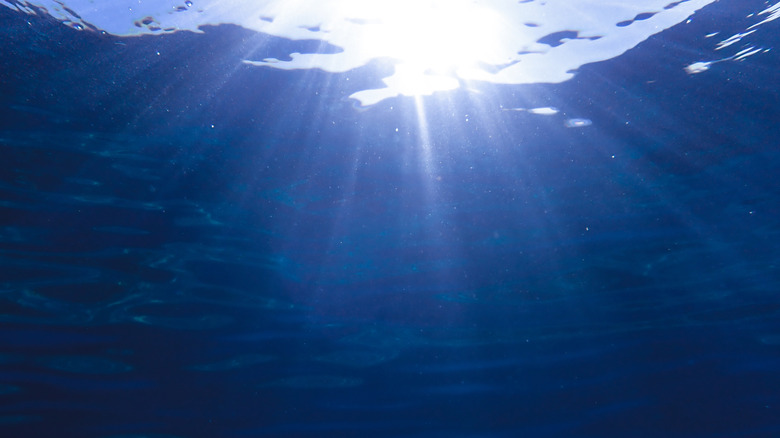Pond Vs. Lake: The Difference Is More Complicated Than Just Size
Ponds and lakes are inland freshwater bodies, and it's easy to see how they are different from other bodies of water like rivers and oceans, but when you compare them to each other, the differences aren't clear at all. People generally assume it's a matter of size, with lakes being larger than ponds, but there are plenty of examples that go against this belief. For instance, in the state of Maine, you can find Great Pond, which is 8,939 acres in area, as well as Keoka Lake, which is just 467 acres in area. If you think that's confusing, you haven't heard the half of it, as some bodies of water end up bearing both designations. Maine's Unity Pond is also known as Lake Winnecook, and Rhode Island's Silver Lake also goes by Kitts Pond.
If these names seem random, that's because they are. There is no official distinction between a pond and a lake, and for much of history, the labeling of freshwater bodies was up to whoever named them. It is only fairly recently that the convention of naming larger bodies lakes and smaller bodies ponds became standard. That's why in the United States, you'll find many big ponds in New England, where the colonial settlement of the nation began. Nowadays, however, limnologists (scientists who study freshwater) have taken a more discerning approach to distinguishing ponds from lakes, and while size is certainly a factor in that, there's also a lot more at play.
Size and light distinguish ponds from lakes
With the exception of the large ponds found in New England, most bodies labeled as lakes have a greater surface area than those labeled as ponds. However, the more important distinction is actually depth, with lakes typically being much deeper than ponds. The reason depth matters more than area is because it affects how far light can penetrate through the water, something that makes a massive impact on freshwater biomes.
Ponds are photic zones, meaning light reaches all the way to the bottom, while lakes are aphotic zones, meaning the bottom is totally dark. Plants cannot grow without light, so one way that some limnologists distinguish between ponds and lakes is by observing plant growth. If there are plants throughout the water, it's a pond, but if plants only grow around the edges, it's a lake. These plants are a major difference between the ecosystem of a pond and that of a lake.
Some limnologists also consider temperature a defining factor. Ponds typically have a uniform temperature throughout because the sun penetrates the water evenly. Lakes, on the other hand, have temperature layers that grow colder the deeper the water gets. Not all limnologists agree on these definitions, but they provide a helpful guide for distinction. Ultimately, the difference between a lake and a pond comes down to the whims of the people that named them.

